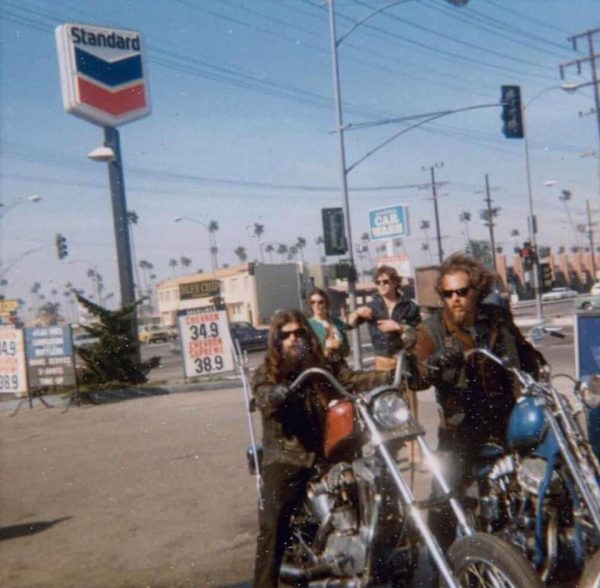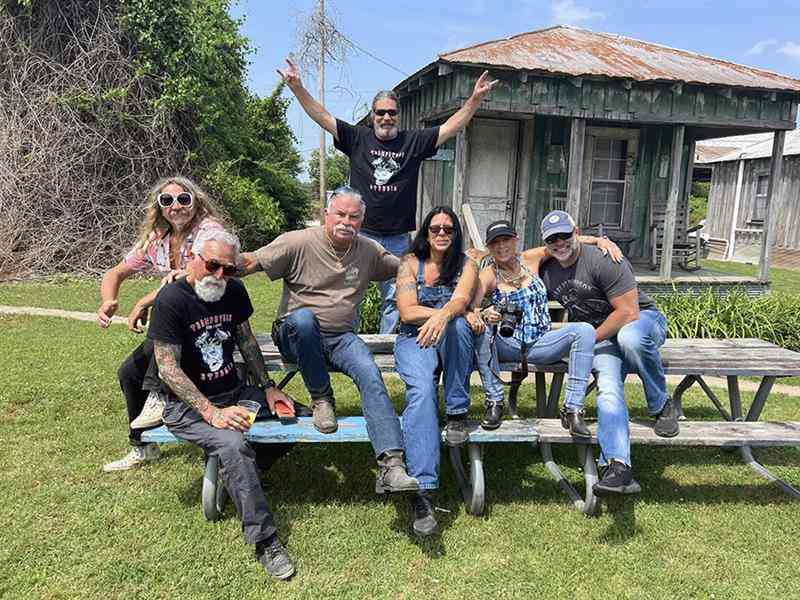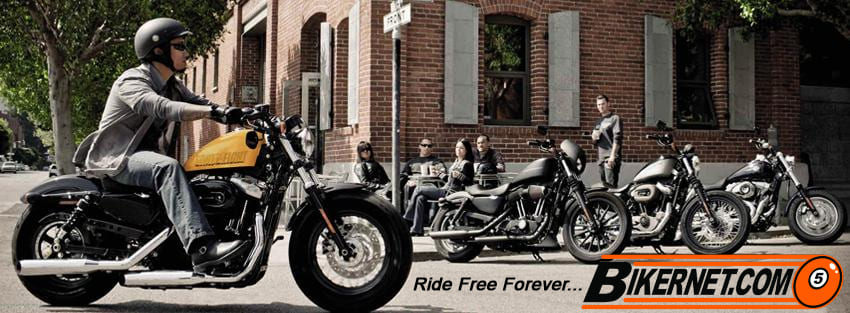Meet Erika Ball the Survivor
By Bandit |

Hey, Erika Ball is my daughter in law and I’m proud of her on several levels. Plus, I know that pride will continue into the future with her efforts with my son, Frank to help addicts recover and find strength and their futures.
Check out this article from Canvas Rebel Magazine in Austin Texas.

We recently connected with Erika Ball and have shared our conversation below.
Erika, appreciate you joining us today. Let’s go back in time to when you were an intern or apprentice – what’s an interesting story you can share from that stage of your career?

EB–For my undergrad internship at UNT – Dallas I worked at a women’s shelter for refugees of foreign countries and their children. These were women who were survivors of human rights abuses, including human trafficking and domestic violence. Since I am fluent in Spanish, and both my parents are immigrants from Paraguay, I was able to help Spanish-speaking women with translation, courtroom appearances and legal consultations.
I provided crisis hotline support, conducted intake interviews, distributed food, clothing, and bus passes and ensured residents’ living quarters were kept clean and orderly. The time I spent with these women was invaluable; I picked up so much wisdom and inspiration just by listening to their stories of perseverance and hardship.
Awesome – so before we get into the rest of our questions, can you briefly introduce yourself to our readers.

EB–My name is Erika Ball, I am the Cofounder of We Are Those People a grassroots nonprofit organization dedicated to individuals and families affected by Addiction also known as Substance use disorder. My husband Frank Ball is the Cofounder. We are both people in long term recovery. We create awareness and advocate for mental healthcare reform by sharing people’s personal stories of long-term recovery through films, photos, and community outreach and sharing those stories to help others.
How about pivoting – can you share the story of a time you’ve had to pivot?

EB–I had to make some serious pivots and adjustments recently. Like the rest of the world, during the pandemic lockdowns, I was furloughed from my job as a Mental Healthcare professional and the powers that be restricted us from any in-person meetings in the recovery community.
I found myself with a lot of time on my hands and the internet was my only tool to connect with the rest of the world and the recovery community. That’s when I started to focus all of my energy on our nonprofit and began working on it full-time.
We received an overwhelming response from the community worldwide. People needed support and this gave me a purpose and allowed me to continue creatively working in the recovery community. We received support from people in Canada, Australia, Argentina, Germany, and throughout the US.
People share their lives and success stories of hope in recovery. There was a need, and we had the opportunity to fill it. People were isolated in their homes, feeling hopeless and disconnected. Even though I was also disappointed and feeling a bit uncertain of my future, WATP gave me a purpose to help support those who were struggling.
These unavoidable setbacks provided me with the perfect opportunity to turn a side project into a full-time profession.
What’s a lesson you had to unlearn and what’s the backstory?

EB–The lesson I had to unlearn was that no matter what my past was like, no matter what my age, and no matter what my present circumstances are there’s never an excuse to give up on my dreams.
I lived a lot of my life making compromises because I gave into negative thinking and limiting beliefs.
The back story was at age 40, after achieving some sobriety, I once again burned my life to the ground. I was forced to restart my life from the ground up due to a relapse.
I faced a crossroads I was either going to continue giving in to a destructive life or I was going to choose LIFE and believe that recovery was possible and that even at my age I could achieve my dream.
Unfortunately, I had to learn this lesson the hard way, like many others. This lesson was one of the greatest lessons of all my life. Step by step I walked away from my negative thinking, and I have built a life beyond my wildest dreams.
Putting sobriety first and believing in myself I have achieved what seemed to be impossible for most of my life. I took responsibility for my thoughts and emotions blaming no one else, not my childhood, not past traumas, not blaming the government, not blaming the church, not blaming my age but just believing.
Since making this choice and choosing recovery, I have been able to build a beautiful, healthy relationship with a man who is now my husband. We recently bought our first home in Austin, Texas. I was finally able to receive my bachelor’s degree, and I became a mental health professional helping those with addiction issues. We created a nonprofit, created a documentary about addiction recovery, and I did a Ted talk on this very subject. I mended my family relationships, and most recently at age 48 was accepted into graduate school where I am currently working on a Master’s of Science for Nonprofit administration.
I will graduate on my 50th birthday. All of this to say that, if someone who perceived themselves as broken as I did can make this change, I truly believe anyone can. I’m excited about the future and I embrace all of the possibilities.

Greasy Kulture 4th of July Sale
By Wayfarer |

Support independents. Support independence.
Freedom is worth celebrating, supporting – and enjoying. So we have 15% off everything in-store (except subscriptions) for the next 24 hours. Back issues, rarities, books.
Just use the code INDIEORDIE when you check out.
Visit https://greasykulture.com/
The cool stuff’s here!
When we find rarities we think you’ll love – from ’60s biker pulp fiction to pleated Bates seats – they end up here. These are the one-offs, so be quick if something catches your eye!
£10 for three premium back issues!
Big Back Issue Bundle: you give us £10 (plus postage) and we send you THREE randomly picked, brand new, perfect bound, premium-sized back issues (9.5 x 6.75 inch, 14 x 24 cm). While stock lasts!
£5 for three digest-sized back issues!
Back Issue Bundle: you give us £5 (plus postage) and we send you THREE randomly picked, brand new, digest-sized back issues. Killer choppers and hot rods – sometimes built by very (now) familiar names! While stock lasts!
* * * *
Tell ’em Bikernet.com Sent Ya !

Born Free 2023 Rocks like Never Before
By Bandit |






I thought I was the coolest guy there until he pulled in. His name was Joe with his 10’2″ board.




















HAPPY 4TH OF JULY!
By Bandit |
 It should be way happy. This 4th marks the 247th commemoration of the day the Declaration of Independence. The country has grown from 13 colonies with about 2.5 million people to 50 states and 14 territories with a population of more than 330 million. The economy grew to over $26T, with a median household income above $70K.
It should be way happy. This 4th marks the 247th commemoration of the day the Declaration of Independence. The country has grown from 13 colonies with about 2.5 million people to 50 states and 14 territories with a population of more than 330 million. The economy grew to over $26T, with a median household income above $70K.
“Scientific and technological advances—public sanitation, the germ theory of disease, and more—have revolutionized public health, with our citizens living 35 years longer on average since the mid-20th century. Deaths during childbirth have dropped fiftyfold, while the child mortality rate—the percentage of children dying before age five—has plummeted from 45% to 1%,” from 1440 News.
Almost every advancement has been with the help of Oil. The term Fossil Fuels is wrong and CO2 is not a pollutant. Yet, why are we living in a divided country behind lies, when it should be the Best of Times.
With the help of the Motorcycle Riders Foundation we are attempting to put the following resolution before Congress, so next 4th can be the Best of Times once more with a Great America making it so.
 A resolution by the Motorcycle Riders Foundation, motorcycle and automotive groups to Congress to demand scientific transparency and truth for every motoring individual in the world.
A resolution by the Motorcycle Riders Foundation, motorcycle and automotive groups to Congress to demand scientific transparency and truth for every motoring individual in the world.
Whereas Truth and Free Speech are the cornerstones of our society, motorcyclists all over the country want our rights and the truth to be respected
Whereas Critical Thinking is the backbone of science it needs to be held high for kids all over the world. America always endeavored to be the bastion of truth and free speech.
Whereas science is never settled and the public requires nothing but the truth as it affects their very existence.
Whereas children deserve to know the truth and scientific transparency. No matter who tries to hide the truth, it will surface and the real deniers will be exposed.
Whereas every law in this country that effects the lives, livelihoods, homes, businesses and transportation must be based on truth or they are meaningless.
Whereas criminal governments throughout history restricted free speech. We cannot allow any attack on free speech to infiltrate our government.
–Bandit
Willie’s 4th of July Picnic
By Wayfarer |

by Bobbie Jean Sawyer
How the ‘Hillbilly Woodstock’ Became a Cultural Phenomenon
July 4th in Texas is practically synonymous with Willie Nelson’s 4th of July Picnic. The event has been a part of the culture of the Lone Star State- on and off – for over 40 years. But beyond being a great party with some of country music’s greatest icons, the picnic helped give birth to the outlaw country movement that changed the state and country music forever.
Click Here to Visit Willie’s Picnic online at Bikernet.com
* * * * * * * * * * * *

Follow Bikernet Free Weekly Newsletter to get latest Motorcycling news, updates, reviews, tech, tips, & lot of fun. Click here & take a test ride.
Willie’s 4th of July Picnic
By Bandit |
July 4th in Texas is practically synonymous with Willie Nelson’s 4th of July Picnic. The event has been a part of the culture of the Lone Star State- on and off – for over 40 years. But beyond being a great party with some of country music’s greatest icons, the picnic helped give birth to the outlaw country movement that changed the state and country music forever.
Willie Nelson’s 4th of July Picnic Tuesday July 4, 2023 2:00 pm CT See Details Willie Nelson’s 4th of July Picnic returns to Q2 Stadium on July 4! The event will feature Willie Nelson & Family, Tyler Childers, Dwight Yoakam, Shakey Graves, Shane Smith & the Saints, Sierra Ferrell, Asleep at the Wheel, and Particle Kid.
Take a look back at Texas’ biggest party and how it all came together.

The Family Reunion
In 1972, Willie Nelson was fresh from Nashville. He had been spending time in his home state after his Tennessee home was destroyed in a fire. He had grown tired of Nashville suits overproducing his records and was eager to start over far from Music City. Then he heard about a gig in Dripping Springs.
The site was Hurlbut Ranch, an unassuming plot of land along Hwy. 290 just west of Dripping Springs. Dallas promoters had their heart set on creating a “Hillbilly Woodstock,” investing $250,000 into the event. It was called the Dripping Springs Reunion.
While the reunion is now remembered for its gathering of hippies and rednecks converged in the Texas Hill Country to see Waylon, Willie and the rest of the redneck rock brigade, the actual lineup was far more conservative. The reunion assembled country legends like Earl Scruggs, Tom T. Hall, Tex Ritter and Roy Acuff.
Missing from the list of names on the much touted lineup? Willie Nelson. Even though he was one of the most sought after songwriters in Nashville, Nelson hadn’t earned top billing just yet (at least in the eyes of the promoters). The long-haired Red Headed Stranger we now know and love was still sporting short hair and a golf cap.
‘Hillbilly Woodstock’
Both the promoters and national media expected the Dripping Springs Reunion to have a massive turnout. (Rolling Stone even sent Annie Leibovitz to snap photos of the event.) But in terms of attendance, the reunion was kind of a bust. Organizers expected 60,000 people a day. Between 7,000 and 10,000 showed up at the reunion, which ran from March 17 through the 19th.
But the Dripping Springs Reunion is remembered because of what it inspired. It further proved that country music wasn’t as straight-laced as Music Row assumed. It showed that there was a hunger for country songs that Nashville wasn’t offering.
One of those songs was by a young songwriter named Billy Joe Shaver. When Waylon Jennings heard Shaver sing “Willie the Wandering Gyspy and Me” backstage at the reunion, he knew on the spot that he’d record the song.
And when clean cut Willie was hanging out backstage with his friends, watching guitars being passed around and listening to songs sung, he realized he didn’t need to be in Nashville to make the music he wanted to make. In fact, he needed Texas.

The Inaugural Picnic
In the months following the reunion, Willie Nelson’s star continued to grow in Texas and beyond. Gigs at progressive country hubs like the Armadillo World Headquarters had made him the face of Austin’s growing music scene. He was free to do whatever he wanted. And what Willie wanted was to throw a massive 4th of July celebration in the Texas Hill Country with all of his closest friends.
Nelson decided the same Dripping Springs ranch should be the site for the inaugural 4th of July Picnic. Inspiration struck Willie in early summer of 1973, which only left weeks to organize the massive event. Incredibly, Willie’s crew pulled it off and 40,000 people attended the one-day event.
The lineup included Waylon Jennings, John Prine, Tom T. Hall, Doug Sahm and Kris Kristofferson.
A Brief History of the Traveling Picnic
Despite being a Lone Star State tradition, Willie’s picnic hasn’t really stayed in one spot for long.

Read the whole history at Wide Open Country.
This article was originally published in 2017. It was updated on June 26, 2020.
–Wide Open country
Wideopencountry.com

The Truth Bikernet Weekly News for June 29, 2023
By Wayfarer |

It’s Coming Whether they Like it or Not
Check out the latest news on Bikernet by clicking here.
* * * *
An Unintentional Pilgrimage
By Wayfarer |

by Rogue and Friends
A Ride To The Crossroads
 I like the things that my brother Berry Wardlaw comes up with and asks me if I want to be involved in.
I like the things that my brother Berry Wardlaw comes up with and asks me if I want to be involved in.
Not long ago he asked me what I thought about a Time Capsule with motorcycle history.
With the way things are changing in our world today and have over the years, I am sure he already knew my answer, as I have been doing some of that in hopes to pass on to our current and future motorcycle riders and others.
Luckily there are others who think the same way and we have museums and other sources doing it. But having a Time Capsule I believe is a new concept.
Click Here to read this photo feature only on Bikernet.com
* * * * * * * * * * * *

Click & know more about Bikernet’s Free Weekly Newsletter
Nash Motorcycle: Independence Weekend Sale
By Wayfarer |

40% OFF NASH MOTORCYCLE
LETS CELEBRATE AMERICA WITH A BIG SALE!!
INDEPENDENCE WEEKEND SALE STARTS NOW!
JULY 1 – JULY 5TH (MIDNIGHT)
USE CODE: FREEDOM40
40% OFF
BUY NOW at https://nashmotorcycle.com/
All Nash Motorcycle Co. parts are 100% USA made materials and hand crafting!
* * * *
Tell ’em Bikernet.com Sent Ya
Climate Journalism is Broken
By Bandit |

Let’s take a look at the numbers.
Of the 51,230 peer-reviewed papers on climate change published in 2020, Perga and colleagues found that only about 9% of them saw any media coverage, defined as a single mention in the paper’s Altimetric score. About 2%, or ~1,000 papers, saw more than 20 mentions in the media. These “mediatized” papers are the focus of Perga’s paper.
The 2% of papers most covered by the media are disproportionately focused:
-
at the global and continental scales;
-
on the end of the 21st century;
-
on the natural sciences and health;
-
and come primarily from just 6 journals (3 from Science journals, 2 from Nature and PNAS).

The biases are large. The paper reports that:
Overall, 56% of the top-100 mediatized papers on natural science report rate or magnitude of climate-driven changes at continental or global scales (40% being projections by the end-of-the-century), while those represent only 4% of the random paperset.
Reporting disproportionately deemphasized studies in the social and political sciences, economics, technology, engineering, energy and agriculture — these are all topics related to what might be done on climate change.
The authors conclude that as a result of these biases, news coverage is biased and the public is misinformed:
Thereby, a few articles get a lot of news mentions, limiting the diversity of information to which readers are exposed (Ortega, 2021). The selective sourcing of news media for high-profile journals and strong degree of co-mention in news outlets thereby come with a loss of disciplinary diversity of the research brought to public’s attention, with over-emphasis on natural science and health, while research findings produced on the social, economic, technological and energy-related aspects of climate change are curtailed back through the mediatization process. The selectivity is even found within the dominant natural science. Mediatized scientific publications are selectively concentrated on the worldwide magnitude of the current consequences of climate change, and projected risks by the end of the century for natural Earth components.

Indeed, the authors of the paper view themselves, alongside journalists, as collaborators in using communication to motivate “action”. Here is how they describe their work:
[C]limate communication research builds on social sciences to explore how and to what extent climate change is relayed and framed whilst developing optimized strategies and guidelines for transforming public engagement into actions.

Although they may look and behave like modern media organizations, they are advocacy groups, and have an explicit agenda; they’re looking for impact. That agenda may coincide with the news, and they may use traditional journalistic techniques to advance it, but in most cases the larger goal of this work is in service of some kind of policy change or other action, and not information or the public record per se.
Climate journalism wasn’t always dominated by an advocacy agenda. More than a decade ago, I along with colleagues Ursula Rick and Max Boykoff evaluated 20 years of media coverage of sea level rise. We found overall media reporting on sea level rise to be highly consistent with the scientific literature and the assessment reports of the Intergovernmental Panel on Climate Change, summarized in the figures below.

We concluded, “accurate reporting on projections for sea level rise by 2100 demonstrates a bright spot at the interface of climate science and mass media.”
What has changed? I can think of a number of things:
-
Journalism itself has changed dramatically, with resources for reporting shrinking;
-
Reporting has shifted emphasis from news to opinion;
-
Niche reporting tailored to reader interests has increased;
-
Climate advocacy has increasingly focused on promoting extreme weather as climate change.
All of this favors what we might call reporting from the keyboard on climate, which would favor utilizing press releases from universities that promote studies in the top 6 journals, focused on projections of climate to 2100 at national or global scales, and linked to the event that just happened. Add in an advocacy orientation and we have the current climate beat — The stories, they write themselves.

Academics have evaluated media reporting based on whether it reflects the “correct” view (good reporting) or challenges it (flawed reporting). The notion arose out of a perception several decades ago that climate skeptics received too much media attention, and gradually expanded to encompass any views outside a shared, preferred narrative of a group of academics, journalists and fellow travelers promoting climate advocacy.

The “balance as bias” thesis has been wildly successful at eliminating certain voices from the legacy media. Ironically, the success of “balance as bias” thesis has itself contributed to profound biases in media reporting, and arguably allowed advocacy journalism on climate to proliferate unchecked.

Since 2020, the year explored in the data above, news media biases have gotten worse. Perga and colleagues report that in 2021 a non-peer reviewed pre-print asserting the “virtual impossibility” of the Pacific Northwest heatwave received 8 times the media coverage of the most-covered peer-reviewed paper of 2020. Climate science reporting apparently doesn’t even need science.
Make no mistake, there are excellent reporters out there doing good journalism on climate. For the average reader, however, telling the difference between biased or advocacy journalism to promote a narrative and reporting that accurately reflects the state of climate science and policy is almost impossible.
I welcome your comments. I’m blocked on Twitter by a number of reporters on the climate beat, so please share. Please click on that little heart at the top of this post and ReStack. I’d especially welcome the views of journalists on the climate beat on this post, which I am happy to publish. At THB, balance is not bias. — Roger Pielke Jr.
Follow on SubStack: https://rogerpielkejr.substack.com

